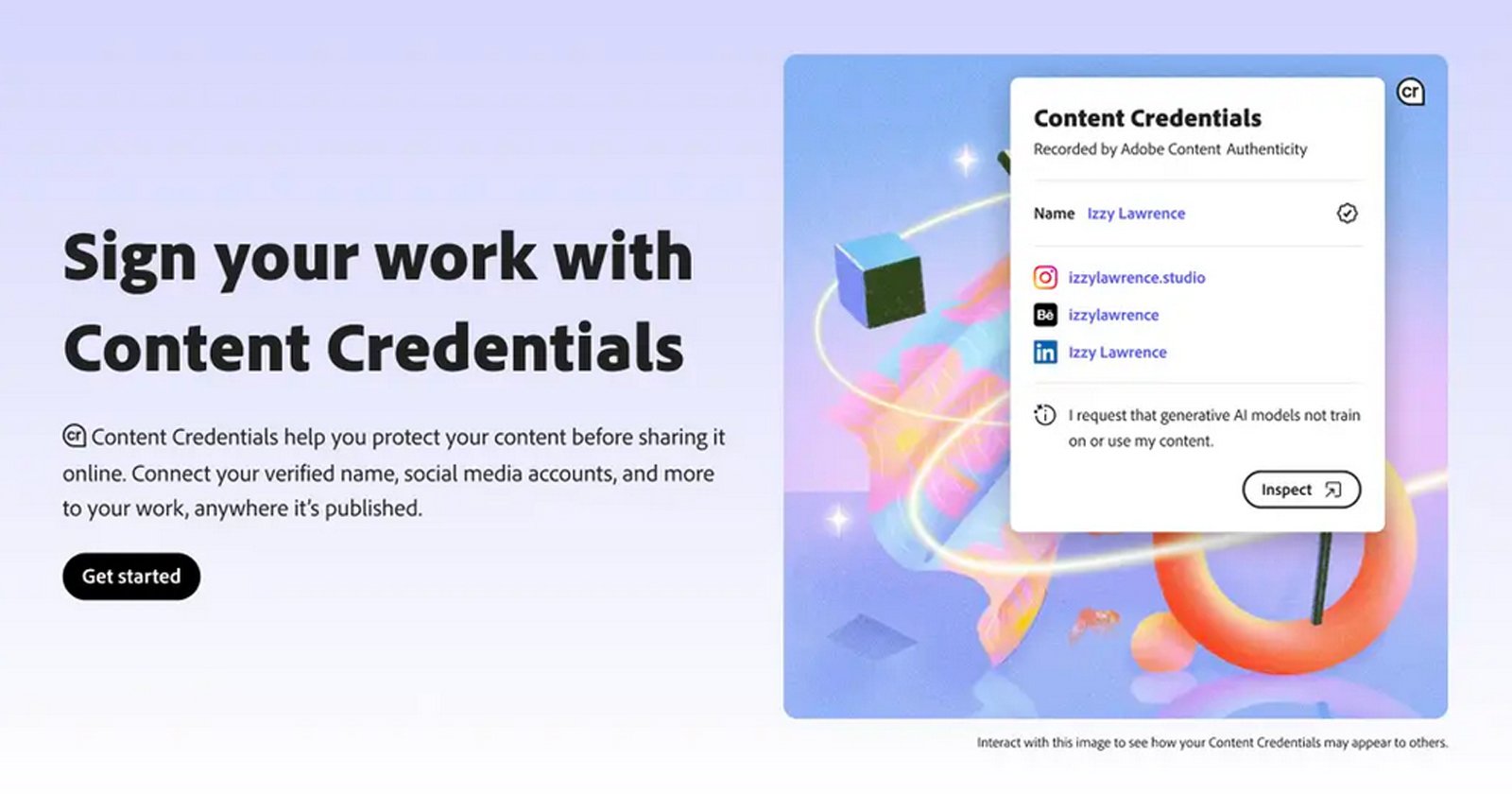Pixel Perfect Truth: How Content Authenticity Is Revolutionizing Photography
Technology
2025-04-24 20:36:15Content

Adobe's Latest Move: A Game-Changing App That Could Revolutionize Digital Trust
In a groundbreaking step towards combating digital misinformation, Adobe has just launched the public beta of its free Content Authenticity Initiative (CAI) app—and this could be a watershed moment for how we verify and trust digital content.
Imagine a world where every image, video, and digital media comes with a transparent digital "passport" that reveals its true origin and editing history. That's exactly what Adobe is aiming to achieve with this innovative app. By providing a robust tool that tracks content provenance, the company is taking a bold stance against deepfakes, manipulated media, and online disinformation.
The app isn't just another tech novelty; it's a powerful solution for creators, journalists, and everyday users who want to ensure the authenticity of digital content. With increasing concerns about AI-generated images and sophisticated digital manipulation, this tool could become an essential guardian of digital truth.
Whether you're a professional photographer, a social media enthusiast, or simply someone who values transparency in the digital landscape, Adobe's new app represents a significant leap forward in maintaining the integrity of online information.
Stay tuned as this technology promises to reshape our understanding of digital authenticity.
Revolutionizing Digital Trust: Adobe's Content Authenticity Initiative Transforms Media Verification
In an era of unprecedented digital manipulation and misinformation, technological innovations are emerging as critical guardians of visual integrity. The digital landscape has become a complex ecosystem where distinguishing between authentic and fabricated content challenges even the most discerning observers, making breakthrough solutions not just desirable, but essential for maintaining media credibility.Unmasking Digital Deception: The Future of Content Verification Starts Now
The Rising Tide of Digital Misinformation
The proliferation of advanced image manipulation technologies has created an unprecedented challenge in digital media authenticity. Artificial intelligence and sophisticated editing tools have dramatically lowered barriers to creating convincing visual fabrications, rendering traditional verification methods increasingly obsolete. Sophisticated deepfake technologies and generative AI platforms can now generate hyper-realistic images and videos that are nearly indistinguishable from genuine content, posing significant risks to journalism, legal proceedings, and public discourse. Professional media organizations, academic institutions, and technology companies have been grappling with this complex challenge, recognizing that unchecked digital manipulation threatens the fundamental trust mechanisms underlying information sharing. The potential consequences extend far beyond mere aesthetic concerns, potentially undermining democratic processes, judicial systems, and global communication networks.Adobe's Strategic Response to Digital Authenticity Challenges
Adobe's groundbreaking Content Authenticity Initiative represents a sophisticated technological intervention designed to restore trust in digital media. By developing a comprehensive verification framework, the company aims to create a robust ecosystem that enables content creators, consumers, and platforms to validate the origin and integrity of digital assets. The newly released public beta application serves as a critical technological infrastructure, embedding cryptographic signatures and metadata directly into digital files. This approach allows for transparent tracking of content modifications, providing an unprecedented level of transparency about an image's provenance, editing history, and potential manipulations.Technical Mechanisms of Content Verification
The underlying technology leverages advanced cryptographic techniques to create immutable records of content creation and modification. Each digital asset receives a unique digital fingerprint that captures critical metadata, including creation timestamp, original creator information, and a comprehensive edit history. These cryptographic signatures function like digital passports, enabling instant verification across multiple platforms and systems. By implementing blockchain-inspired verification mechanisms, Adobe has created a decentralized authentication framework that transcends traditional centralized verification models.Implications for Various Professional Domains
The potential applications of this technology span numerous professional domains. Journalism can leverage these tools to validate photographic evidence, legal professionals can authenticate documentary evidence, and academic researchers can ensure the integrity of visual research materials. Moreover, the technology offers significant potential in combating misinformation, providing media platforms with robust mechanisms to identify and flag potentially manipulated content. This could represent a transformative approach to managing digital information ecosystems, potentially reshaping how society consumes and validates visual information.Global Technological Collaboration and Future Perspectives
Adobe's initiative represents more than a technological solution; it symbolizes a collaborative approach to addressing complex digital challenges. By creating open standards and inviting global technological partnerships, the company is positioning itself as a thought leader in digital authenticity. The long-term vision extends beyond immediate verification needs, potentially establishing new global standards for digital content integrity. As artificial intelligence and machine learning continue evolving, such verification frameworks will become increasingly critical in maintaining trust in digital communication channels.User Experience and Accessibility
Critically, Adobe has designed the Content Authenticity application with user-friendly interfaces, ensuring that complex cryptographic processes remain transparent and accessible. The public beta demonstrates a commitment to making advanced technological solutions comprehensible and practical for diverse user groups. By prioritizing intuitive design and seamless integration with existing workflows, Adobe is lowering technological barriers and encouraging widespread adoption of content verification practices.RELATED NEWS
Technology

Beyond the Brew: Wanderstop's Innovative Journey into Artisan Tea Culture
2025-03-10 13:00:00
Technology

Beyond Windows: Microsoft's Half-Century Journey into the AI Revolution
2025-03-31 04:11:06
Technology

Breaking: Apple Watch Series 10 Price Plummets in Shocking Amazon Blowout Sale
2025-03-29 14:10:33





